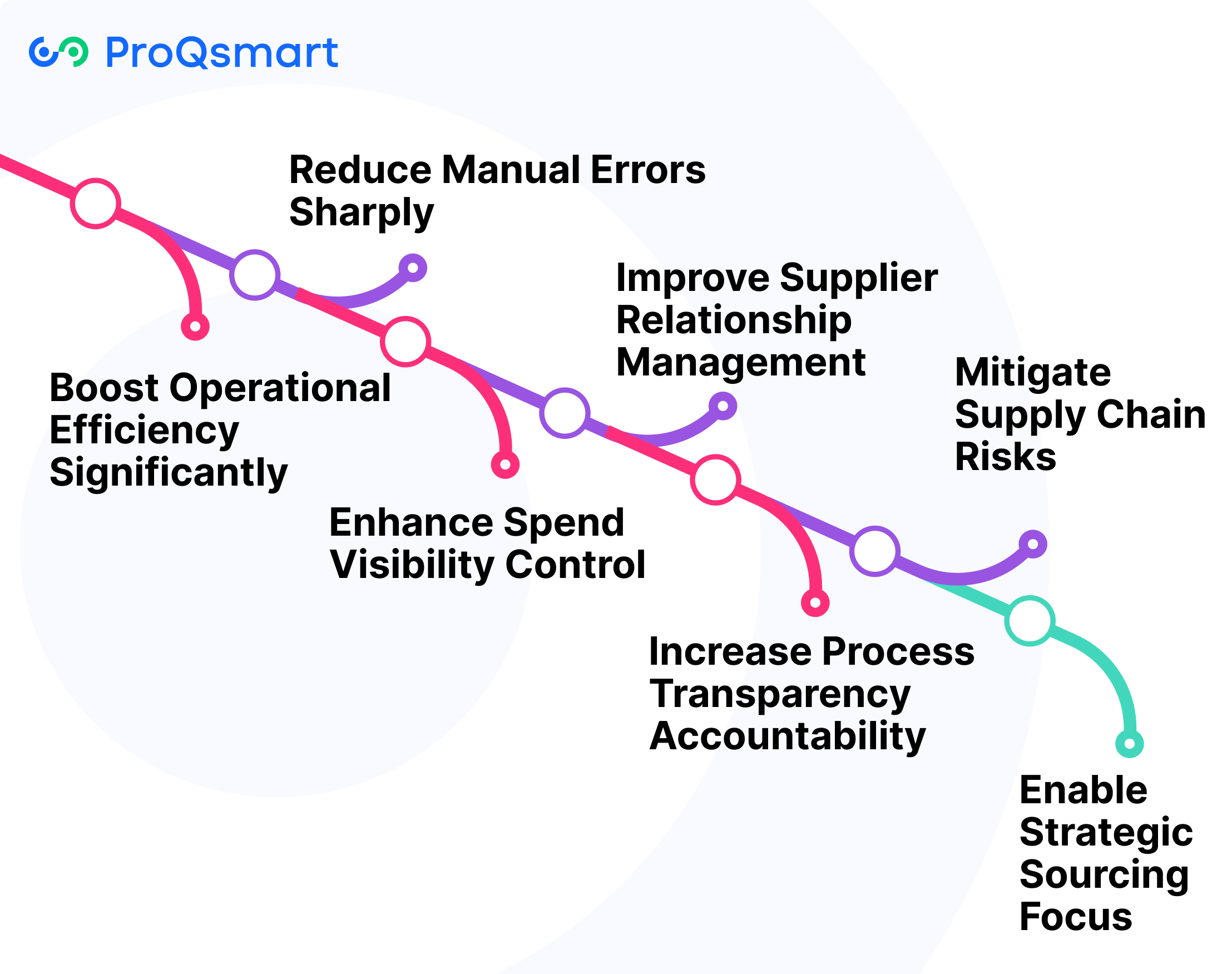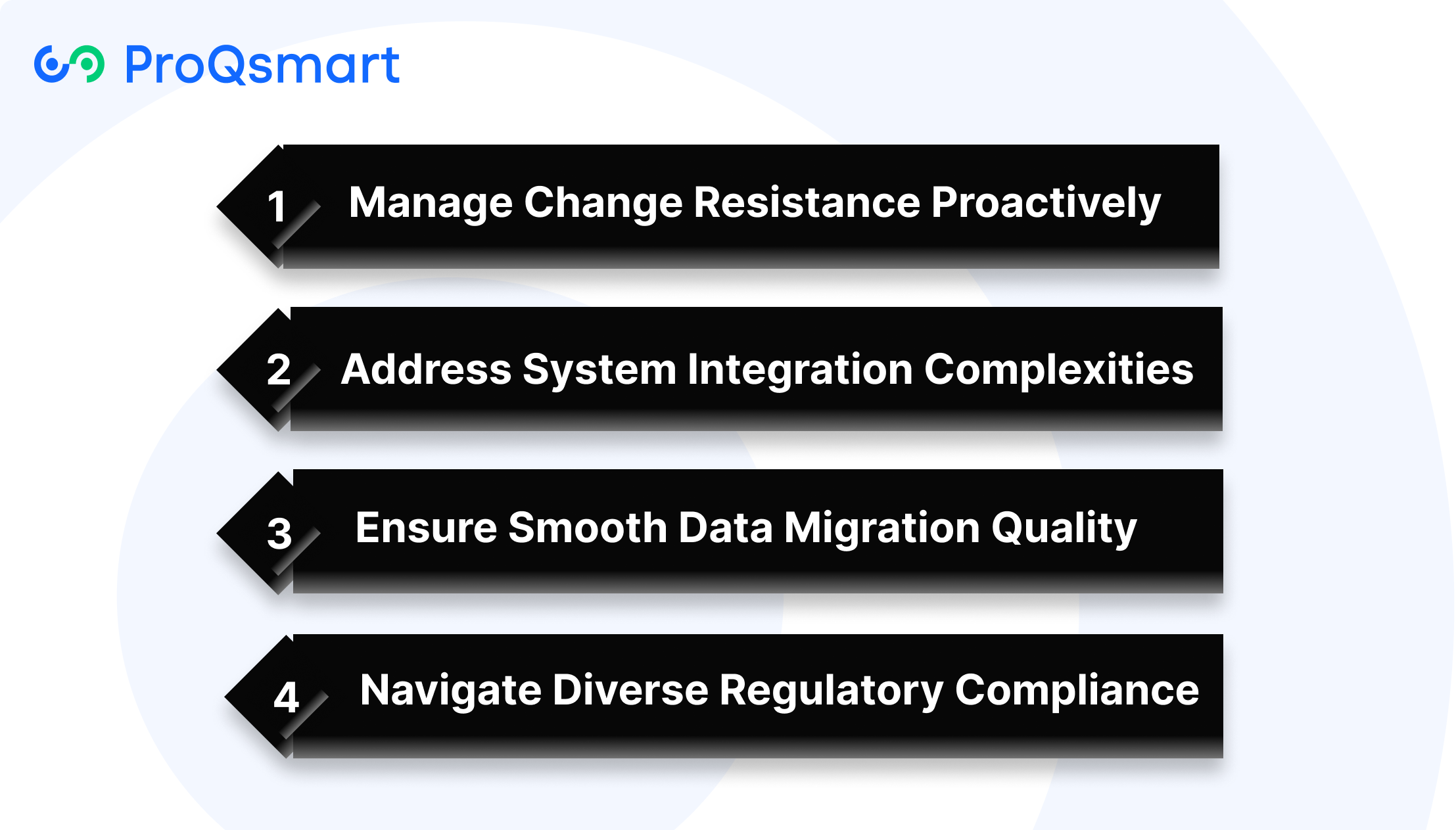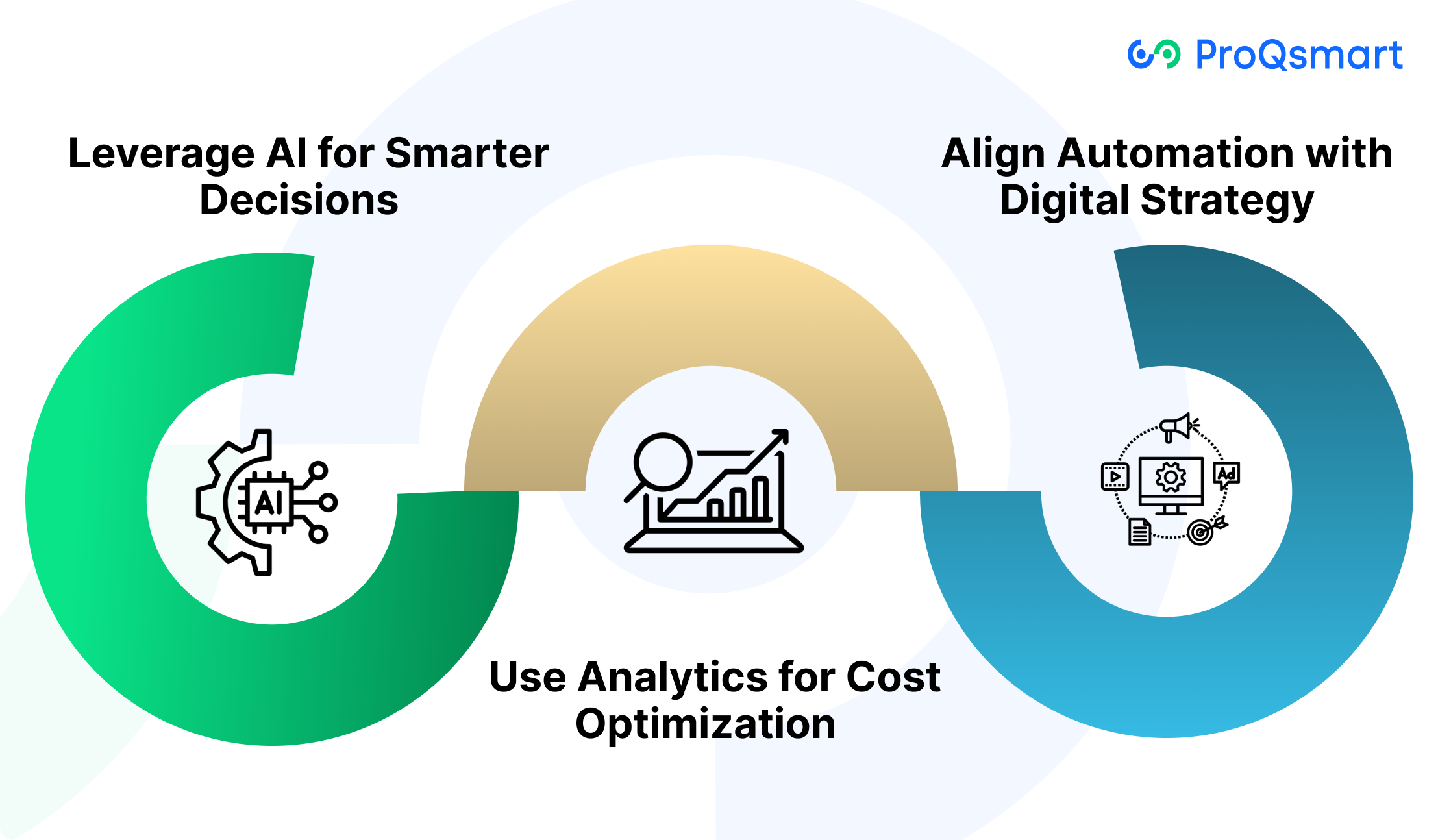A more automated procurement process frees up teams to process orders, monitor spend, and reduce paperwork with less effort.
They can share updates in real time, keep all files in one spot, and spot issues before they slow things down.
Many implementers are taking forward steps with tools that integrate seamlessly into the systems they already have, so no major change is required.
The following sections illustrate how layering each of these steps results in quicker, easier procurement within any add shop.
Why Automate Procurement Processes?

With so much on the line, automation in procurement is quickly becoming the lifeblood of smart custom manufacturing teams that seek easy work, efficient production, and improved bottom lines. Legacy manual processes hinder efficiency, create confusion, and frequently result in a lack of visibility into data.
Automated tools allow intelligence, and that’s what helps teams do more and work faster each day. They minimize errors that typically occur when entering or copying data manually. These tools automate the sorting of tasks and the checking of details. They push reminders, keeping teams constantly aware of what’s next in line and able to rely on their data.
1. Boost Operational Efficiency Significantly
Automated workflows allow teams to bypass mountains of paper forms and email threads. ProQsmart has e-tender tools that simplify the bidding process. These tools save an immeasurable amount of time that would have otherwise been spent managing documents.
This helps ensure everyone is working from the same playbook and allows for transparency around updates. Thanks to shared dashboards, procurement teams and suppliers alike have visibility into changes and notes in real time, and no one gets left behind on an important task.
2. Reduce Manual Errors Sharply
Automating procurement processes eliminates the money and time wasted on manual data entry mistakes. Automated checks automatically flag unusual figures or incomplete information, correcting issues immediately and reducing the risk of fraud.
Standard templates for requests or orders help keep language and numbers straight, which means fewer errors land in the system.
3. Enhance Spend Visibility Control
Dashboards on platforms such as ProQsmart reveal how dollars are spent, monitor spend against contracts and evaluate supplier performance. Teams are able to identify trends, reallocate budgets in record time, and communicate real-time information across every office.
This transparent landscape facilitates smarter, more informed decisions on orders and selecting the most effective partners.
4. Improve Supplier Relationship Management
Automated onboarding, a key feature of procurement automation solutions, allows you to add new suppliers more quickly and ensure compliance from day one, enhancing the entire procurement process.
5. Increase Process Transparency Accountability
Automated tracking features and auto-reports in ProQsmart ensure each step remains transparent. Teams and leaders have visibility into who did what and when, which maintains accountability and builds trust.
This process keeps an accurate digital paper trail.
6. Mitigate Supply Chain Risks
Automated alerts identify delays or price increases immediately, allowing procurement professionals to leverage procurement automation solutions to plan for backups and communicate with suppliers, preventing project delays.
7. Enable Strategic Sourcing Focus
Having spent less time on busywork, teams can focus on utilizing procurement automation tools to identify new savings or a better deal. Machine learning capabilities in ProQsmart drive intelligent decision-making and sustainable outcomes.
Key Workflows Ripe for Automation
Procurement teams are under increasing pressure to accelerate processes, reduce expenses, and maintain compliance. Fortunately, automation provides a logical answer, especially when it comes to the Procure-to-Pay process. Utilizing the proper technology, we are able to turn 80% of those steps from manual to digital.
By selecting workflows with the highest return and evaluating existing processes for automation opportunities, organizations unlock immediate value.
Streamlining Purchase Requisition Approvals
Replacing manual purchase requisition approvals with automated workflows keeps teams nimble and prevents bottlenecks from forming. By leveraging digital forms, this organization turns a complex process into an easy, clear way to submit and monitor requests.
Pre-established approval flows translate to less time spent hovering for approvals, particularly on routine purchases. Whenever a team requires fresh components, automation goes to work.
It automatically audits and verifies budgets, routes requests to the appropriate manager for approval, and shows the up-to-the-minute status. ProQsmart’s workflow tools go a step further by tying approvals to budgets and tracking every step to meet audit requirements.
Automating Purchase Order Generation
Auto-generated purchase orders save manual entry time and reduce entry errors. When a requisition is approved, the system generates a PO, ties it to inventory, and attaches it to supplier information.
That translates into zero-margin-error orders, on time, every time. With ProQsmart, teams report reduced errors and faster order cycles, particularly when orders can stream directly to the supplier’s system.
Simplifying Vendor Onboarding Management
Additionally, onboarding vendors typically takes a long time. Automation centralizes document collection, automatically verifies compliance with requirements, and closes the loop with vendors by providing digital status updates.
Platforms such as ProQsmart take care of pre-qualification, contract management, and flag missing information, so suppliers start ten times faster.
Digitizing Invoice Processing Matching
Matching invoices to purchase orders and receiving documents becomes much less of an ordeal when automated. E-invoicing and machine learning identify mismatches and process invoices in minutes.
That eliminates paper and eliminates the need for manual paper checks. Now, teams don’t get surprised come quarter end with all invoice payment obligations tracked down and vendors paid on time.
Improving Contract Lifecycle Management
With contract management tools that automate tracking of important dates, flagging of upcoming renewals, and sticking all contract terms in one centralized location. Automated reminders make sure your teams stay on top of deadlines, and automated processes help guarantee compliance with every rule.
As a result, ProQsmart’s contract visualization tools make it easier to track them and help negotiate smarter contracts with suppliers.
Selecting Effective Procurement Software
Selecting an effective procurement automation solution directly affects team efficiency and time savings. It simplifies the procurement process automation and helps teams stay up-to-date with innovations and best practices. Tools with advanced procurement technologies, including AI, help teams stay one step ahead.
Assess Your Core Business Needs
Teams usually start by taking a hard look at what inhibits their process. Others might experience bottlenecks in managing bid tracking or in monitoring vendor information. Including everyone—buyers, finance, and IT—forces you to clarify your need-to-have requirements.
After all, this step will surface areas of need such as automated data entry or real-time capital spend reporting. One financial institution in the Asia Pacific adopted automation in order to bolster its anti-money laundering practices. As a result, they produced stellar results.
Evaluate Integration Capabilities Carefully
Ensuring new software integrates with existing tools is essential. Ivalua integrates seamlessly with your accounting and ERP systems. This way, payment records are reconciled against and dramatically lessens the potential for errors.
Open APIs ensure that future add-ons won’t run into a dead-end. More than 60 percent of high-performing organizations operate integrated procurement and AP operations, enabling healthy growth and cash flow.
Prioritize User Experience Interface
The most effective systems streamline the process. Simply testing the interface out on end-users can identify pain points before launch. Companies with comprehensive training, such as ProQsmart, get teams prepared from the beginning.
Along with real-time collaboration, streamlined bidding processes, and comprehensive tracking, ProQsmart provides teams with a user-friendly interface that is simple to learn and navigate.
Consider Scalability Future Growth
Growth brings with it an increasing number of orders, vendors, legislation, and volume of data. Scalability is crucial; the right software is one that can scale as your business does.
Cloud-based solutions, available online, allow businesses to quickly scale by adding users or capabilities. Designed for expansion, ProQsmart accommodates additional processes such as capital expenditure or bill of quantities variations.
Tailor Solutions for SME Needs
Especially for small firms, it is critical that a procurement automation solution be appropriate to fit limited budgets and unique requirements. ProQsmart’s flexible pricing and custom procurement automation features help these teams stay lean without losing out on key tools like supplier checks or budget tracking.
Overcoming Implementation Hurdles Successfully

When implementing procurement automation, procurement leaders do face a unique set of very tangible implementation hurdles. Teams often run into pushback from staff, tangled system integrations, data quality headaches, and the constant pressure to keep information safe and compliant.
These hurdles are not unique to the manufacturing, tech, or construction sectors regardless of company size. Having a stepwise approach to it all provides a much easier path to that transition and allows teams to realize tangible value from their automation efforts.
Manage Change Resistance Proactively
Any change in procurement routines is typically met with great resistance. By showing the value that automation will provide, teams can earn more meaningful support. It streamlines busywork, increases cycle times and enables staff to spend time on more strategic priorities.
As an illustration, 30% of enterprises that automate supplier management experience a reduction in cycle times. Open conversations, transparent demonstrations, and interactive workshops all provide staff opportunities to engage with new tools and technologies.
Providing teams with a voice and agency during the rollout builds their trust. An organizational culture that supports tech adoption and innovation, such as ProQsmart, ensures that the change feels less intimidating.
Address System Integration Complexities
Whatever new tools are developed, they need to connect directly with ERP, accounting, and inventory programs. Smart and early planning with IT experts will identify potential weak links.
For example, ProQsmart reduces the pain associated with integration by providing out-of-the-box links and workflow tools. Running pilot runs and gathering real-world user feedback prior to going live helps identify glitches before an expensive mistake is made.
Ensure Smooth Data Migration Quality
A phased approach to maintaining data ensures up-to-date and consistent records. Data is readjusted after each path step to identify any gaps, discrepancies, or missing data.
By training staff on data tasks, we’re better able to retain quality in our work. Teams that prioritize data quality sidestep issues that typically accompany a hasty transition.
Navigate Diverse Regulatory Compliance
Complying with local and international regulations is important. Teams then choose software that complies with these rules, including tools and functionalities for auditing and reporting.
Adversarial checks test everything with the expectation that an attacker will find some way in. ProQsmart’s audit tools and automatic compliance checks give teams peace of mind when new regulations come down the pipeline.
AI and Analytics: Next-Level Automation

AI and analytics continue to reshape the operating models of procurement teams. They bring new ideas to accelerate, measure, and improve each step of that process. Automation platforms give teams tools to deal with more complex supply chains and handle changes or surprises fast.
Through the combination of AI and real-time data, companies are able to see the complete picture of each transaction and vendor partnership. This change transforms procurement from repetitive, paper-intensive functions to high-value, strategic, and agile workflows.
Leverage AI for Smarter Decisions
Teams can use generative AI to analyze massive amounts of procurement data and identify practices that have proven most effective. Enhanced with AI, they identify historical trends in supplier performance and proactively identify risks before they even emerge.
AI provides a 360° view of every supplier—across risk, compliance, and contract requirements. All of this together is aimed at helping teams choose the best performing suppliers while improving overall performance.
ProQsmart, for instance, leverages AI to monitor supplier performance, streamline compliance documentation, and enforce contract terms and conditions. These products enable users to focus their efforts on developing good supplier connections.
When implemented correctly, these partnerships can double the performance of a company versus its peer set.
Use Analytics for Cost Optimization
Procurement analytics parse spend data to illustrate opportunities to save money and how to allocate a budget more efficiently. By forecasting future needs, predictive tools can alert teams to upcoming demands and assist with early, effective planning.
Through improved data, these teams can save their agencies money in supplier negotiations and contract extensions. Companies with aligned procurement and accounts teams experience more than 50% stronger revenue growth, highlighting the impact of integrated data.
Align Automation with Digital Strategy
Automation is most effective when it’s aligned with a business’s overall digital strategy. Integrating procurement data with other digital systems helps everything run more like a finely tuned machine and allows businesses to react quickly to shifts in the market.
Modular and flexible solutions, such as composable AI, fit more easily into existing infrastructures and adjust with you as demands increase. Continually measure how these tools contribute to achieving larger objectives, ensuring that each action taken makes an efficient and effective contribution.
Conclusion
Automation is transforming procurement by streamlining workflows, reducing manual errors, and delivering significant cost savings. Automated procurement processes eliminate bottlenecks such as lost forms or delayed approvals, ensuring requests are routed instantly and tasks are completed efficiently. Teams benefit from greater visibility and control, with real-time data and analytics making it easier to spot errors, optimize spending, and maintain compliance. Automation also digitizes documents, centralizes communication, and minimizes paperwork, freeing staff to focus on strategic initiatives rather than repetitive tasks.
By adopting automated procurement, organizations not only accelerate deal closures and improve supplier performance but also reduce operational costs and enhance transparency throughout the process. As markets evolve rapidly, leveraging technology for procurement is essential for staying competitive and agile.
Discover how ProQsmart’s automation solutions can help you streamline procurement, boost efficiency, and drive better results. Book a demo today!




